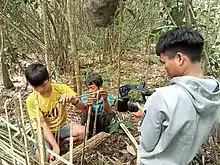
| Total population | |
|---|---|
| c. 60,000[1] | |
| Regions with significant populations | |
| 26,010[2] | |
| 13,902 (2013) (Brao sub-group)[3] | |
| Languages | |
| Brao, Khmer | |
| Religion | |
| Animism, Christianity, Theravada Buddhism | |
Brao people (Khmer: ព្រៅ, Prŏu [prɨw]) are an ethnic group that live on both sides of the Cambodia-Laos border.[1] There are approximately 60,000 Brao people, broadly defined, worldwide. They mainly live in Attapeu and Champasak Provinces in southern Laos, and Ratanakiri and Stung Treng Provinces in northeastern Cambodia. In Cambodia, the Brao include people from the following sub-groups: Amba, Kreung, Kavet, Brao Tanap, and Lun. In southern Laos, they belong to the Jree, Kavet, Lun, Hamong and Ka-ying sub-groups [4]
- Brao people speak various dialects of the Brao language, a Western Bahnaric Mon–Khmer language of Cambodia and Laos.[5][4]
- Sometimes the Brao people are confused with the Bru, or the Brou, a Katuic Mon-Khmer language speaking group found in Khammouane and Savannakhet Provinces in southern Laos, and adjacent areas of Viet Nam. Some Bru people also live in northeastern Thailand.[6]
The main religion of Brao is Animism, although "a small minority of the Brao in northeast Cambodia have recently converted to forms of evangelical Christianity." Brao variety of Animism focuses on appeasing "a wide array of malevolent spirits who manifest in various contexts and ways." Most rituals "require the consumption of a particular form of fermented rice-beer" as well as "sacrificing chickens, pigs, and water buffaloes and, less frequently, cows."[7]
Some people confuse the Brao and the Brou/Bru because an anthropologist, Jacqueline Matras, who wrote about a Brao Tanap village in Ratanakiri Province, but spelt their name "Brou".[8] However, linguists agree that the proper name is Brao.[5]
See also
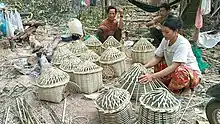
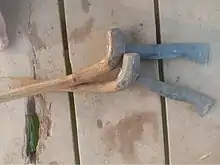
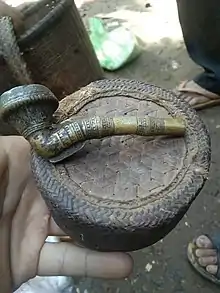
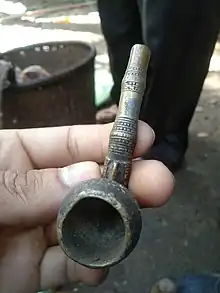
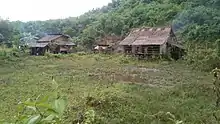
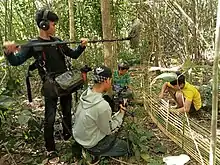
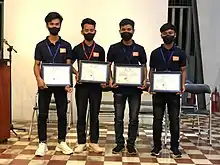
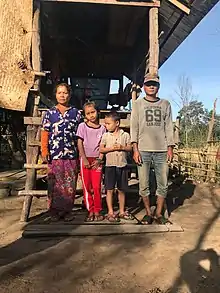
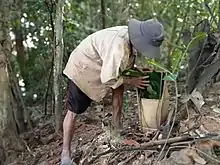
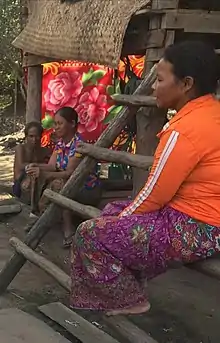
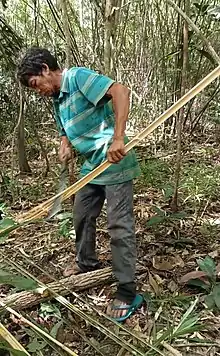


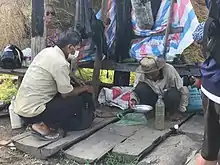
References
- 1 2 "Archived copy". Archived from the original on 2011-06-29. Retrieved 2008-09-27.
{{cite web}}: CS1 maint: archived copy as title (link) CS1 maint: unfit URL (link) - ↑ "Results of Population and Housing Census 2015" (PDF). Lao Statistics Bureau. Retrieved 1 May 2020.
- ↑ "Cambodia Inter-Censal Population Survey 2013 - National Profile of Statistical Tables - Part 1" (PDF). National Institute of Statistics, Ministry of Planning, Cambodia. May 2014. p. 13. Retrieved 2019-06-21.
- 1 2 Baird, Ian G. 2008. "Various forms of colonialism: The social and spatial reorganisation of the Brao in southern Laos and northeastern Cambodia". PhD Dissertation, Department of Geography, University of British Columbia, Vancouver, B.C., Canada.
- 1 2 Keller, Charles; Jordi, Jacqueline; Gregerson, Kenneth; and Ian G. Baird. July 2008. Brao dialects: lexical and phonological variations. Revue de l'Institut de la Langue Nationale de l'Académie Royale du Cambodge. Phnom Penh: Institute of National Language. Special Issue. pp. 87-152.
- ↑ Chamberlain, James R. 2012. Phou Thay and Brou Symbiosis. International Workshop: Peoples and Cultures of the Central Annamite Cordillera: Ethnographic and Ethno-‐Historical Contributions–Towards a Comparative and Inter-‐Disciplinary Dialogue. Institute of Anthropology and Religion (Laos) and University of Gothenburg (Sweden) and Vientiane.
- ↑ Baird, Ian G. 2013. "Shifting Contexts and Performances: The Brao-Kavet and Their Sacred Mountains in Northeast Cambodia." Asian Highlands Perspectives 28, 1-23 (5).
- ↑ Matras-Troubetzkoy, J. 1983. Un Village en Forel. L'essartage chez les Brou du Cambodge.SELAF, Paris, 429 pp.
